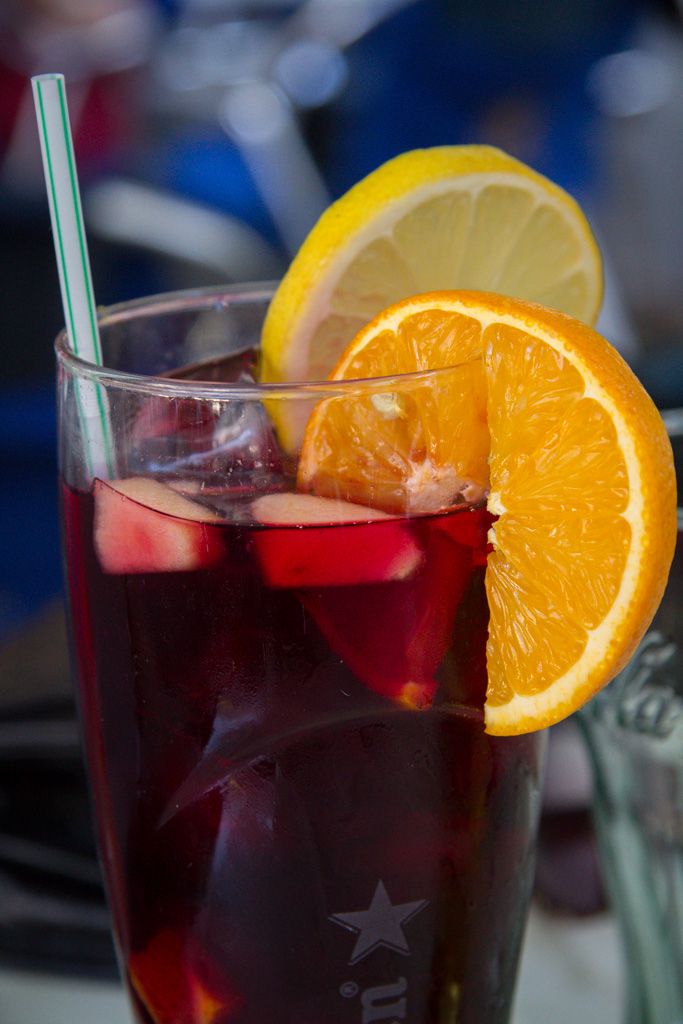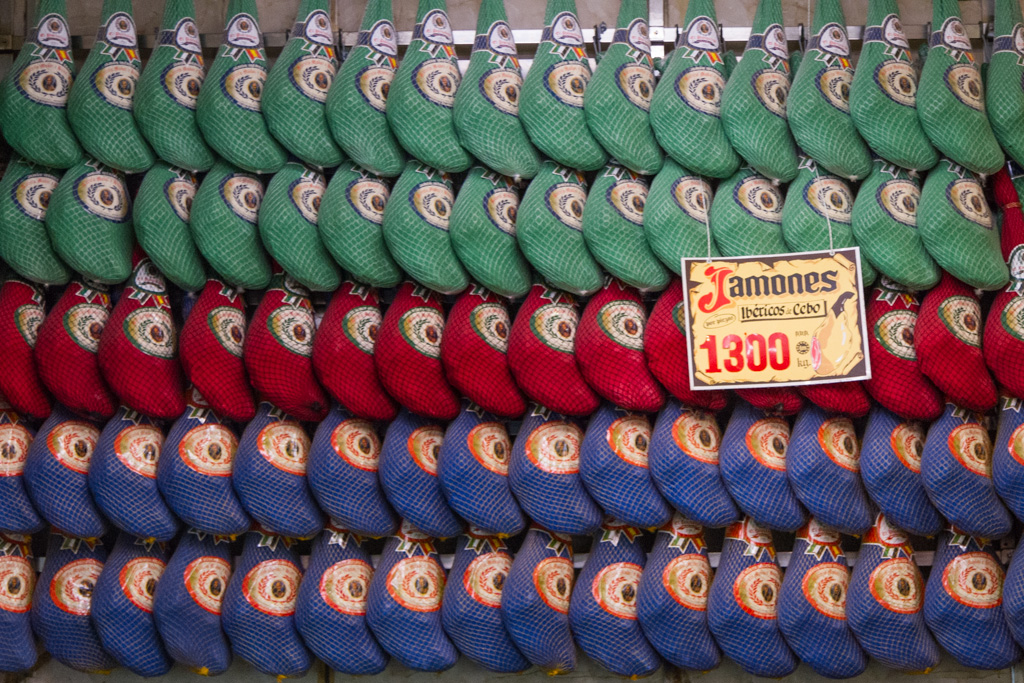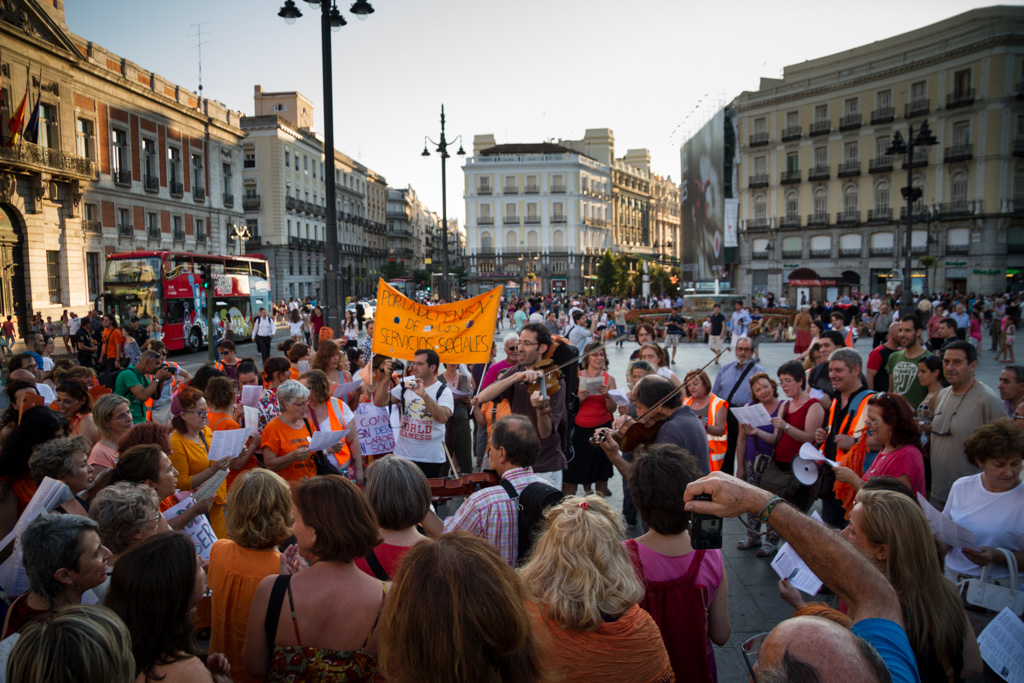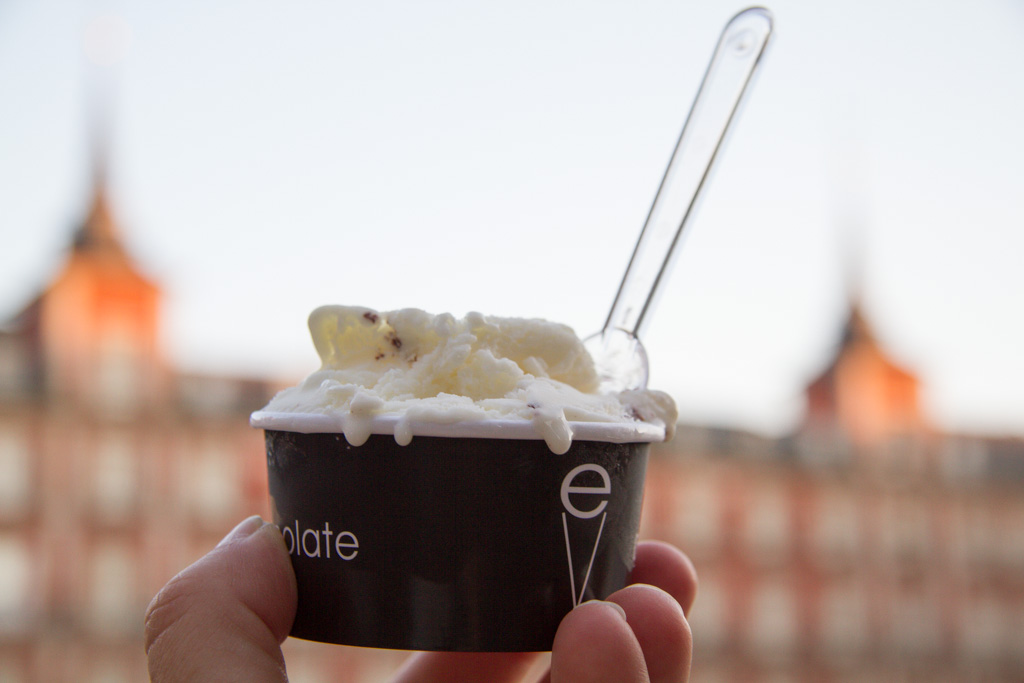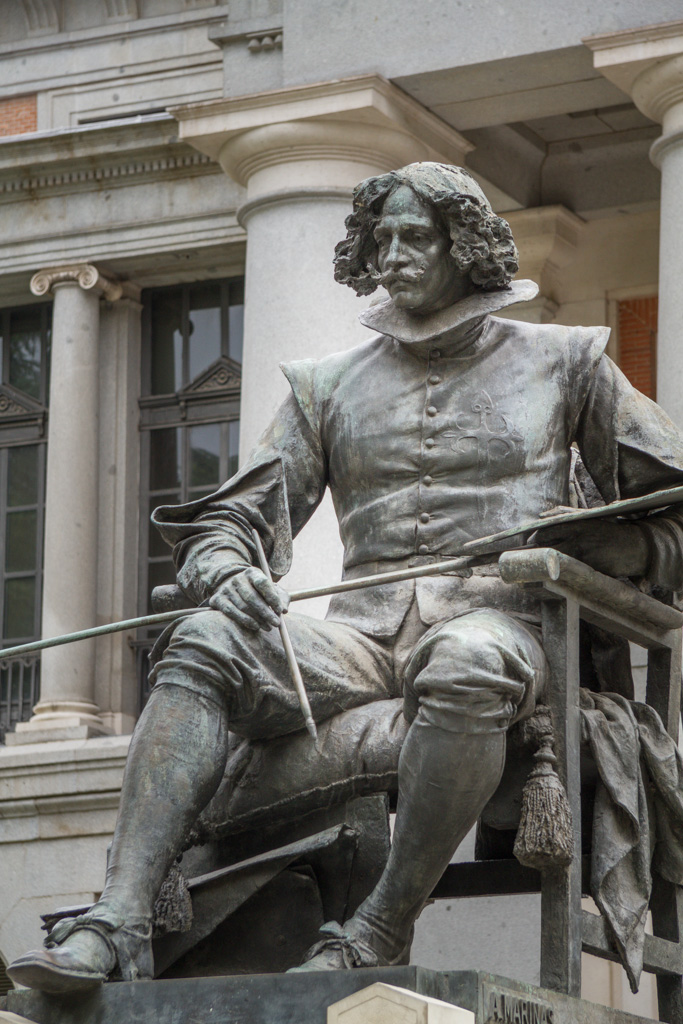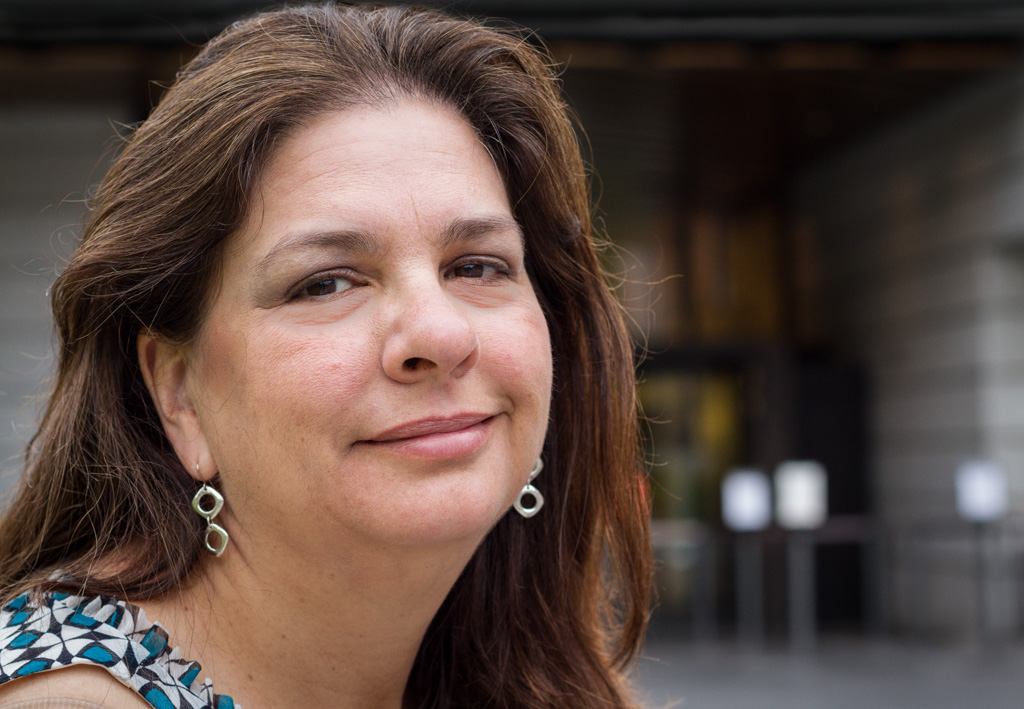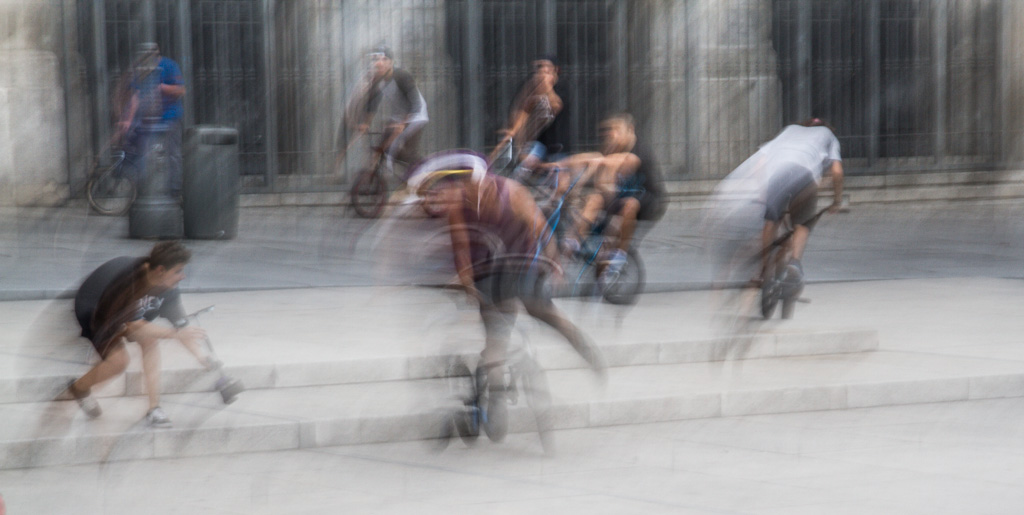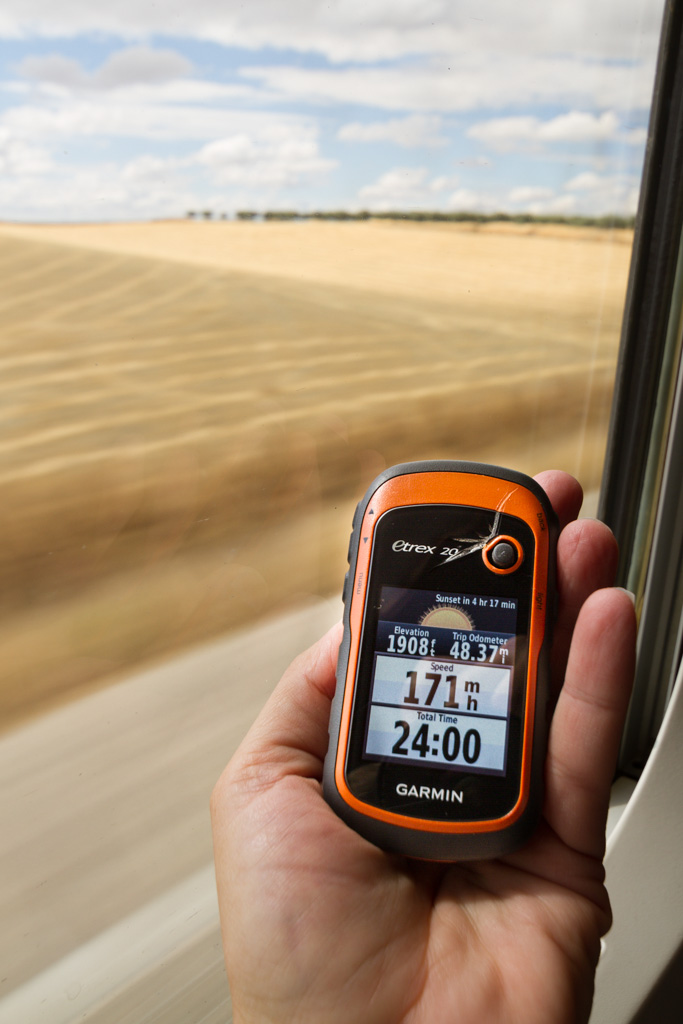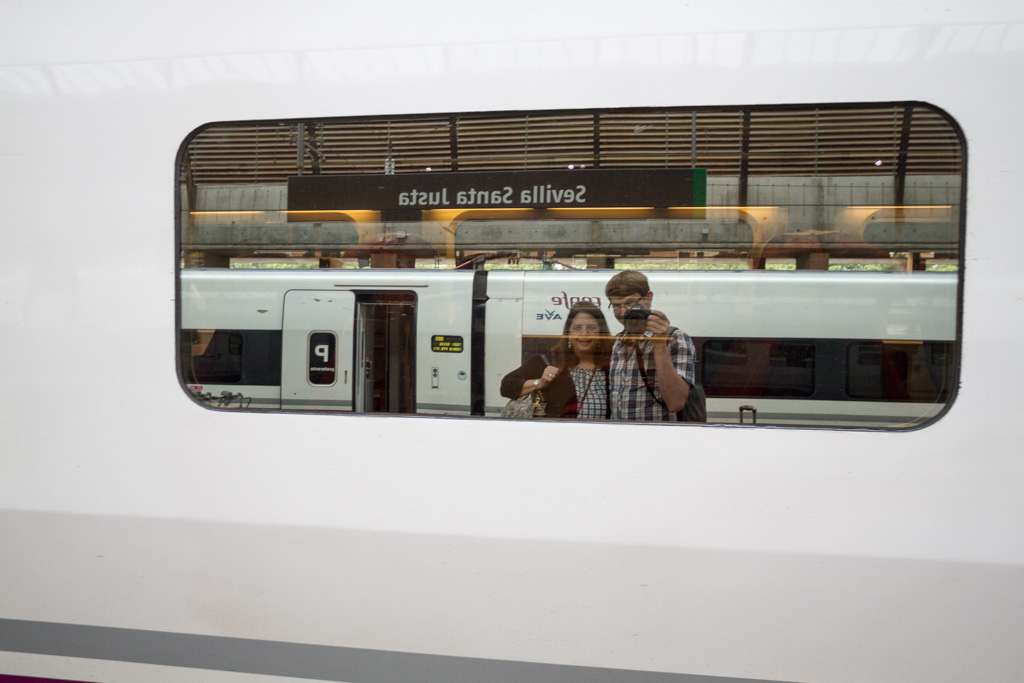Our first full day in Madrid began with an 11am bike tour of the city. We were the only people scheduled, so it was essentially a private tour. Our guide, Joop, was Dutch, but he’d done his homework about the city – entertaining us with stories about its history and anecdotes about the artifacts. The tour was three hours long, and we covered about 12 miles. The map below is a track recorded on my GPS.

Madrid bike tour route.
Our first stop was in Plaza Dos de Mayo where we learned about the uprising of the people of Madrid against Napoleon’s troops.
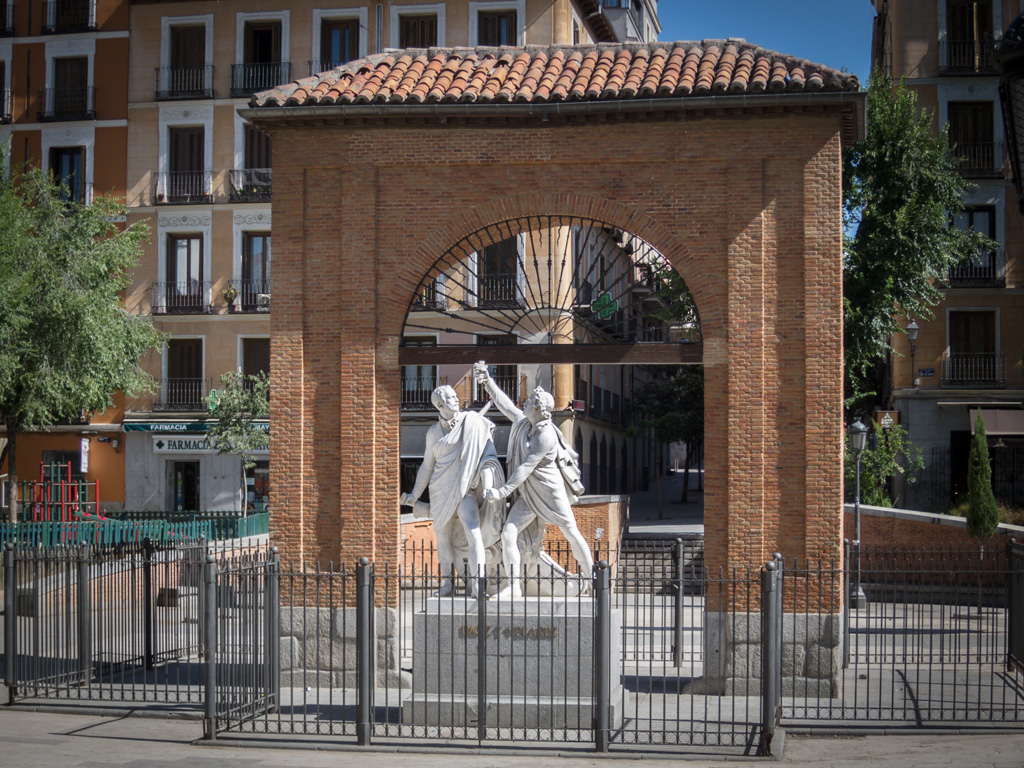
Plaza Dos de Mayo. Luis Daoíz de Torres and Pedro Velarde y Santillán are commemorated in a statue as officers who led their troops against the French on that day.
In Parque de Oeste is an ancient Egyptian temple that was going to be flooded in the 1960s by the Great Dam of Aswan. Egypt donated it to Spain, shipping and assembly not included.

Templo de Debod
In the Plaza de Oriente, in front of the Queen’s Palace, is a statue of Filipe IV. The king wanted his statue to have a horse on two legs (like a painting by Diego Velázquez) so he could look powerful, but he didn’t want a rod under the horse to hold it up like everyone else’s statues of horses on two legs. This was quite a challenge in the 17th century for the sculptor Pietro Tacca, so he called up Galileo for some advice. Galileo was inventing physics at the time and could do the math. He told him to keep the bronze statue hollow, but fill the back of the horse with iron. Voilà, a standing horse just like the king pictured it.

Filipe IV
From there we pedaled through Plaza Mayor and the arts district before arriving at the Museo del Prado, which we’ll visit inside later on the trip. Joop took us on a beautiful ride through the botanical gardens and Parque del Retiro – Madrid’s equivalent to Central Park. One stop included the statue of the Fallen Angel (“Monumento del Ángel Caído”), originally created for the 1878 Exposition in Paris. In 1885 it was installed in the park – many people felt it inappropriate to put a statue of Satan in a park in highly Catholic Madrid. To make it even more controversial, they built up the highest hill in the park so that the statue would be at 666 meters above sea level.
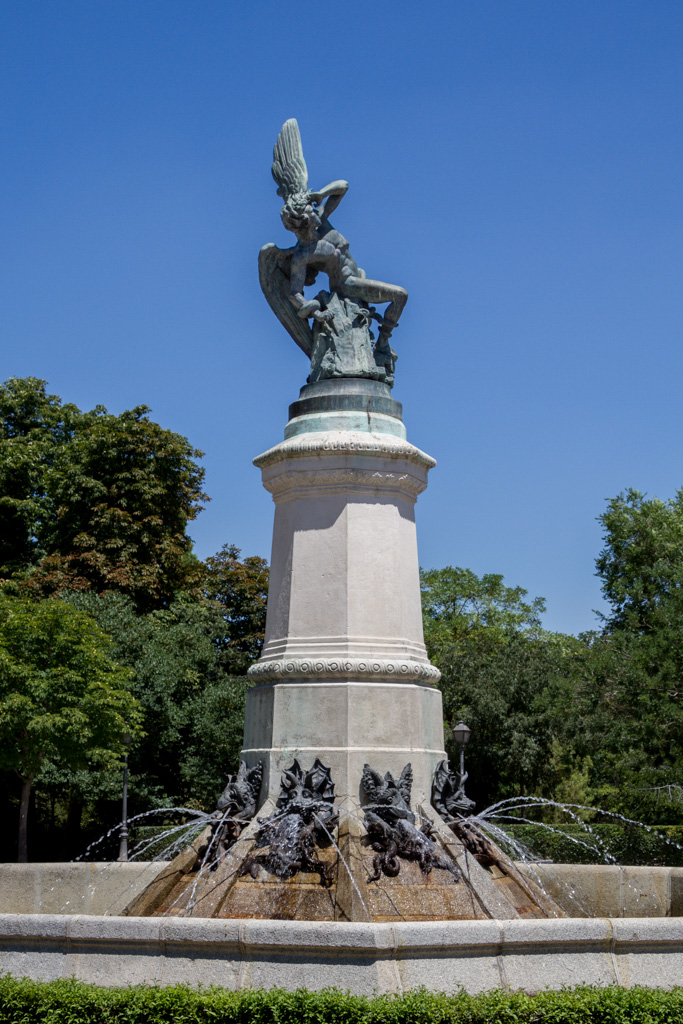
London had a Crystal Palace in 1851 for its Great Exhibition, and in 1887 Madrid got one of their own. It originally was planned to be a temporary structure to exhibit Philippine plants, but it still stands today for displaying art exhibits from the Museo de Arte Reina Sofia.

Palacio de Cristal
On the final leg of our bike tour we stopped at the Puerta de Alcalá. In the late 1700s King Charles III held a competition to design a more impressive gate to the city. After turning down all the submitted designs he commissioned Francesco Sabatini, who, hip to the fact that the king was hard to please, turned in only two proposals. The king loved both of them and did an 18th century mashup – approaching from the east you see one design and approaching from the west you see the other.

Puerta de Alcalá
Better that the gates, though, was Joop’s story about the gypsies there. They will offer you a rosemary branch, and if you take it they will grab your hand and read your palm. If you don’t pay them well for the reading you may end up like Joop with a gypsy curse on you – perhaps manifested as a car crash two days later in the mountains. His advice: if a gypsy curses you, send the curse back instantly with “¡Mismo para ti!”
After the bike ride we chose the wrong cafe for lunch, but found ice cream afterwards to make everything better. Finally it was time for a Spanish tradition: the siesta. What a great idea.
After our respite we wandered around on our own, stopping at Mercado de San Miguel, one of the beautiful food markets in Madrid. We had tapas in Plaza Mayor, which may not be the best food in town, but made for great people watching. Straight from there we went to dinner at Restaurante Botin, famous for their roast sucking pig. Though the afternoon nap was great, we were filled with rich food and still a bit jet-lagged so we passed on another of Madrid’s late nights.

Restaurante Botin, seen from atop the steps in Plaza Mayor.




